Year 3 Teaching Resources
Explore printable worksheets, digital activities, games and more Year 3 resources, all aligned to the Australian curriculum! The teacher-created resources have all been designed with primary teachers and students in mind to meet the special needs of children as they transition into the middle years of their primary school education.
Carefully curated and thoroughly reviewed by the expert teachers of the Teach Starter team to ensure they're classroom-ready, our Year 3 resources can save you lesson planning time this school year with editable and differentiated options at the ready.
Teach Starter’s Year 3 resources utilise a vast array of resource types and have something for every learning area. Here's just a taste of what you'll find for your classroom!
- Spelling words and English worksheets
- Fractions activities and Maths worksheets
- Social and emotional learning activities
- Narrative writing stimuli
- Language conventions practice
- And so much more!
Are you new to teaching Year 3? Here's a look at what this year of primary school is all about!
What Is Year 3 in Australia?
Year 3 sits right in the middle of primary school for most students in Australia as the fourth year of compulsory education.
How Old Are Kids in Year 3?
The exact age of students will vary slightly by state (and birthday!), but most children in your Year 3 class will be 8 to 9 years old.
What Do Students Learn in Year 3?
Year 3 is a big one for Australian students. Many will sit the NAPLAN tests, and more than a few will hit double digits before the year is through. This is a big year for Maths between the introduction of more complex fractions and formal multiplication, as well as even more skill-building in other learning areas.
Exactly what they're expected to learn will depend to some degree on the state or territory where you are teaching, but here's a look at what your students can expect to encounter in the key areas of the curriculum!
English
Year 3 students continue to develop their reading, writing, speaking, and listening skills in their English lessons. Reading will involve more complex texts, including longer novels, non-fiction texts, and poetry.
Students will also be expected to analyse these texts more deeply, examining themes, character development, and literary techniques. Comprehension skill-building will require deeper analysis of texts and drawing inferences from what is read.
While Year 2 instruction focuses on basic writing skills such as sentence structure and punctuation, this older group of students will move toward more advanced writing skills such as paragraphing, using descriptive language, and organising ideas in a logical way.
Grammar and spelling will also become a greater focus this year, with an emphasis on understanding and applying more complex grammar rules and spelling patterns.
Maths
Fractions feature front and centre of the Year 3 Maths curriculum. Students will learn to identify, compare, and order unit fractions (those being fractions with a numerator of 1), as well as use them in simple problem-solving contexts.
We already alluded to this being a big year for multiplication, and is it ever! Year 3 students learn the basic multiplication facts — such as 2 x 2 = 4 and 3 x 3 = 9 — and they begin to use these facts to solve multiplication and division problems. They also learn to interpret and create simple multiplication and division problems.
Students will have the chance to build upon their understanding of measurement concepts from Year 2, including length, mass, and capacity. They'll learn to measure and estimate using standard units, plus how to compare and order measurements.
Maths students will expand their knowledge of 2D shapes this year, and they will begin to learn about three-dimensional shapes and their properties.
Place value is still a big part of maths, of course. Year 3 students expand their understanding of place value to include numbers up to 10,000, and they learn to read, write, and compare four-digit numbers. They also learn to use place value to solve addition and subtraction problems.
Science
Science instruction in Year 3 is more focused on building a deeper understanding of scientific concepts and their applications, as compared to Year 2. It also emphasises the development of scientific inquiry skills that will help kids become more proficient in conducting scientific investigations and communicating their findings.
Students in Year 3 learn to ask questions, plan and conduct investigations, collect and record data, and communicate their findings as part of their development of science inquiry skills. They spend a portion of the year learning about the characteristics of living things, including plants and animals. Year 3 students will have the chance to explore the life cycles of plants and animals, as well as learning about the needs of living things and their habitats.
While they're learning about things that live on Earth, they're also learning about the planet itself, exploring geological features such as rocks, soil, and minerals. They also explore heat energy and how it can be transferred from one object to another.
Last, but certainly not least, Year 3 students learn about the properties and states of matter, including solids and liquids (gasses are explored later on in primary school).
Humanities and Social Sciences
Building on the foundation set in Year 2, Year 3 HAAS lessons build a deeper understanding of historical events and concepts, as well as exploring the social and economic systems that underpin Australian society.
Students learn about the historical events, people, and places that have shaped Australia's history. They explore the concept of change and continuity over time and learn to use historical sources to investigate the past. Students also study significant cultural events celebrated in our country and how they contribute to Australia's diversity and identity.
Geography instruction will guide students as they learn about the physical and cultural characteristics of places and regions. They'll learn more about the representation of Australia as states and territories, and as Countries/Places of First Nations Australians. Students will also begin exploring Australia's neighbours such as New Zealand, Papua New Guinea, and Indonesia.
Civics instruction sees Year 3 students strengthening their understanding of what it means to live in a democratic society. They will draw upon their own personal experiences to examine why rules are important and to discuss how they can be active participants in the communities to which they belong.
Health and Physical Education
With their bodies rapidly changing, Year 3 students learn about the factors that influence their health and wellbeing, including the importance of good nutrition, hygiene, and sleep. They also learn about social and emotional health, including how to manage their feelings, develop positive relationships, and make safe and healthy choices.
In Year 3, there are a number of different types of safety on tap in lessons, including road safety, water safety, and personal safety. They develop an understanding of risk and learn strategies for staying safe in different situations.
Year 3 students also learn about the importance of being active and informed citizens in their community. They learn about the benefits of volunteering and begin to develop an understanding of the responsibilities and rights of individuals in society.
The Arts
In Year 3, students develop more advanced skills in drawing, painting, and other visual arts techniques. This includes studying the elements of art — such as line, shape, colour, and texture — and beginning to use these to create more complex artworks.
In music class, these children are learning all about musical notation and how to read and write simple music, while drama instruction explores different forms of drama, including role-playing, improvisation, and scripted performance. Students get the chance to learn about the elements of drama, such as character, plot, and setting, and begin to use these to create their own dramatic works.
- Plus Plan
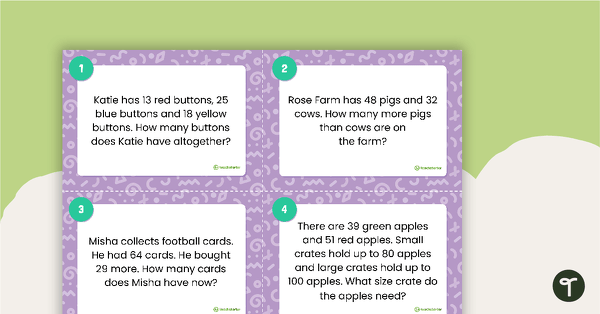
Addition and Subtraction Problem Solving Task Cards
Practice solving 1- and 2-step word problems by adding and subtracting 2-digit numbers with this set of 16 task cards.
- Plus Plan
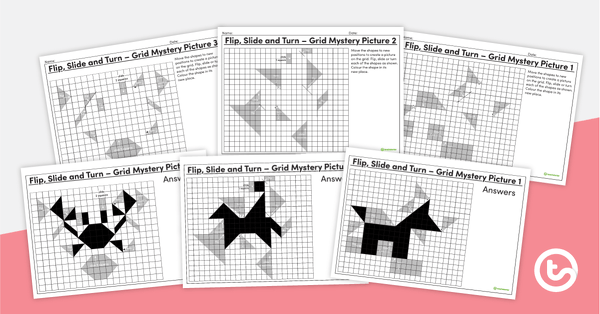
Flip, Slide and Turn – Grid Mystery Pictures
A worksheet to practise flips, slides and turns.
- Plus Plan

Using Cardinal Directions – Worksheet
A worksheet to practise using cardinal directions.
- Plus Plan

Tricks in 60 Ticks - Classroom Party Games
A collection of 10 fun classroom games to do in 60 seconds!
- Plus Plan
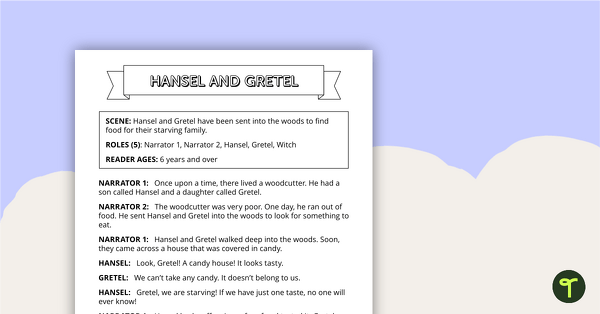
Readers' Theatre Script - Hansel and Gretel
A script which can be used during readers' theatre or Drama sessions, aimed at students 6 years and over.
- Plus Plan
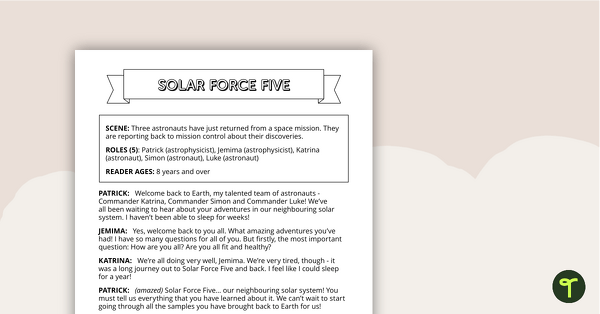
Readers' Theatre Script - Solar Force Five
A script which can be used during readers' theatre or Drama sessions, aimed at students 8 years and over.
- Plus Plan
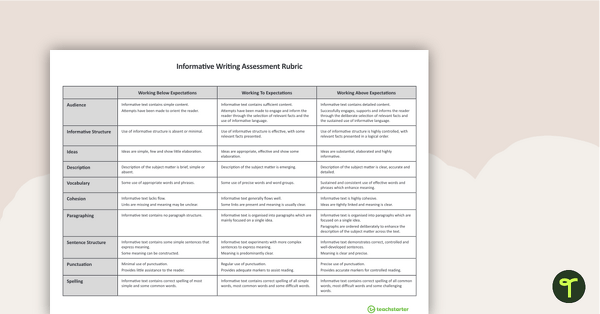
NAPLAN-Style Assessment Rubric - Informative Writing
A NAPLAN-style rubric designed to help teachers to assess students' informative writing.
- Plus Plan
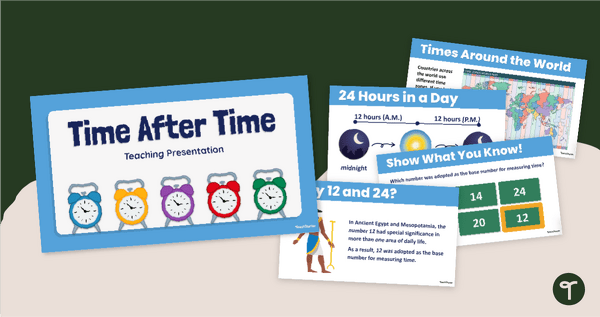
Time After Time Mathematics PowerPoint
Introduce your students to the history of the clock, time zones, and telling time with an interactive teaching presentation.
- Plus Plan
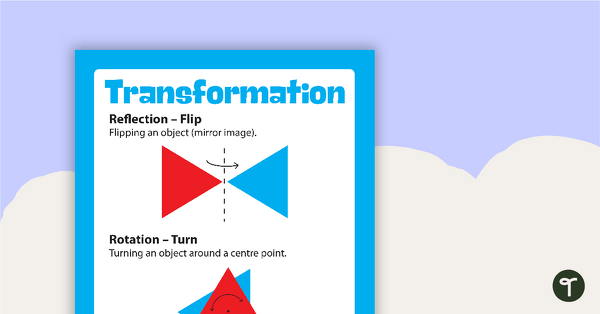
Transformation Poster and Worksheets
A poster and worksheets to teach children about transformations.
- Plus Plan
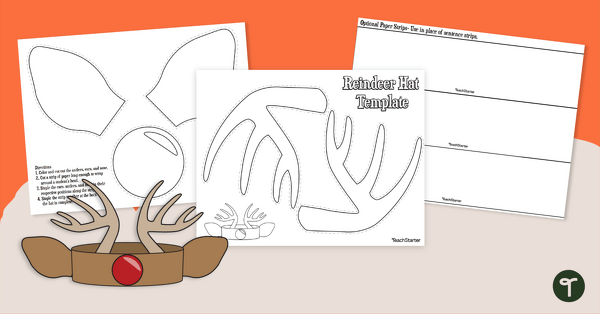
Reindeer Headband - Hat Template
Craft a whole herd of reindeer hats in your classroom this year with a printable reindeer antlers hat template.
- Plus Plan
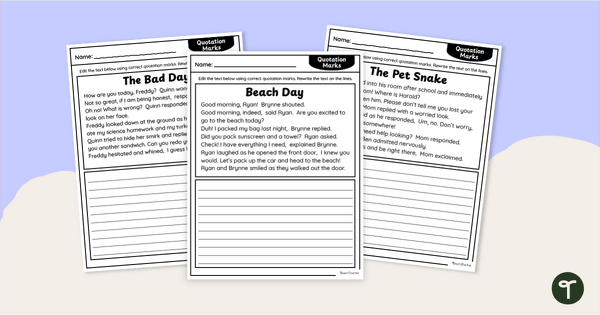
Paragraph Editing - Quotation Marks Worksheets
Practise using quotation marks to signify dialogue in text with a set of printable Paragraph Editing Worksheets.
- Plus Plan
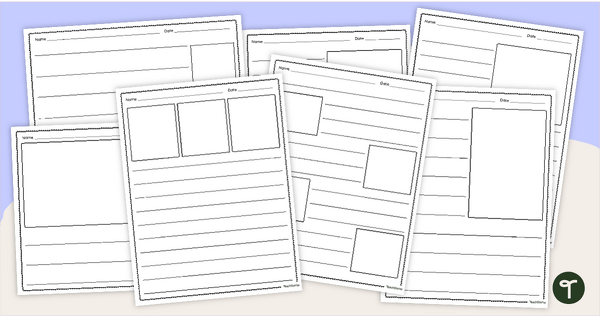
Writing Paper with Picture Box - Differentiated Templates
Help your students organise and display their writing and artwork using printable writing paper with picture boxes.
- Plus Plan
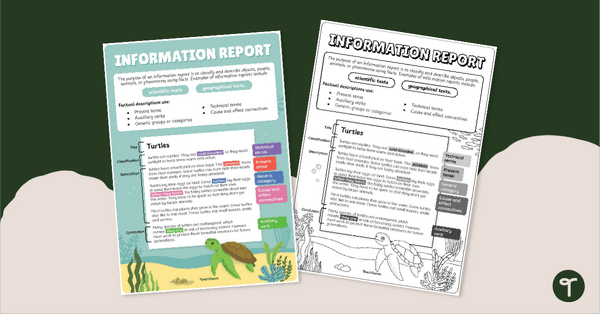
Information Report Text Type Poster With Annotations
Display this information report with annotations to help students identify the structure of this type of text.
- Free Plan
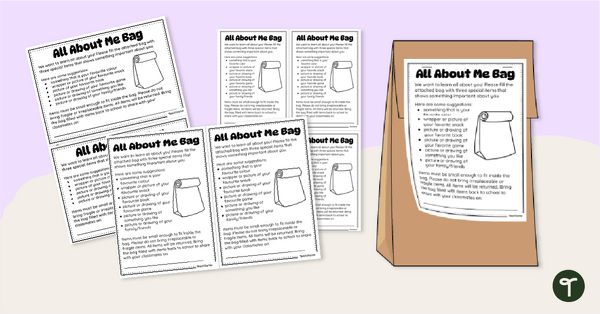
All About Me Bag Activity Template
Get to know your students a bit better by having them create ‘All About Me’ Bags!
- Plus Plan
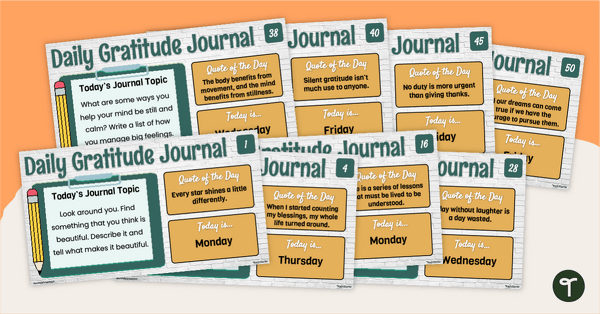
Gratitude Journal Writing Prompts for Kids - Daily Slides
Project and inspire reflective writing with 50 gratitude journal writing prompts in one handy slide deck.
- Plus Plan
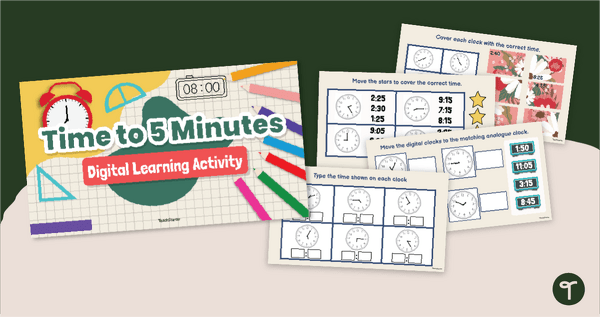
Time to 5 Minutes - Digital Learning Activity
Review how to tell time to the nearest five minutes with an independent Telling Time Digital Learning Activity.
- Plus Plan
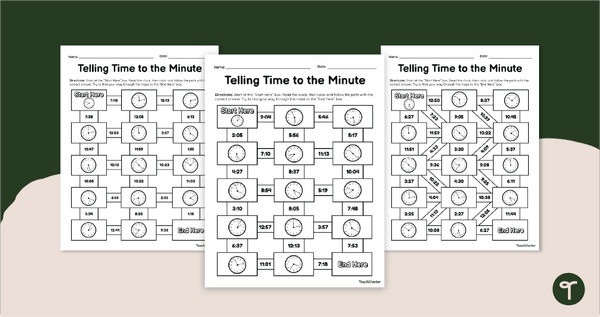
Time in Minutes - Maths Maze Worksheets
Tell time to the nearest minute while finding your way through this set of 3 Telling Time to the Minute maths mazes.
- Plus Plan
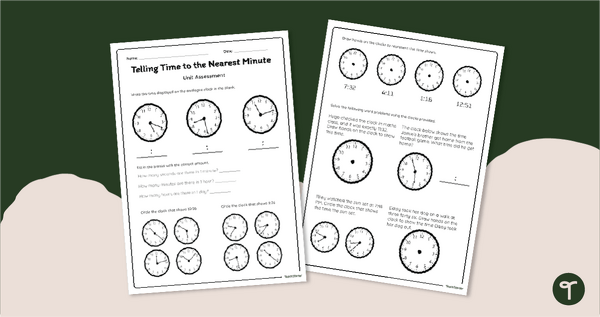
Telling Time to the Nearest Minute Test
Assess your student's abilities to tell time to the nearest minute with a Telling Time to the Minute Unit Test for Year 3.
- Plus Plan
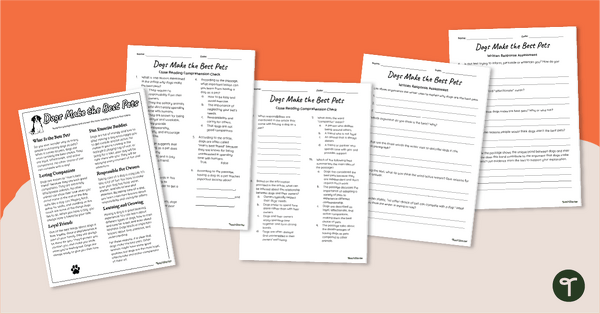
Dogs Make The Best Pets - Reading Comprehension Test
Assess reading comprehension skills with printable Reading and Writing Comprehension worksheets.
- Plus Plan
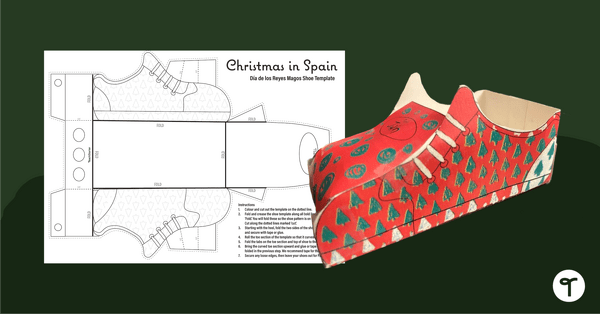
Christmas in Spain - 3D Printable Shoe Template
Assemble this Christmas shoe template to introduce your students to a fun Christmas tradition from Spain.
- Plus Plan
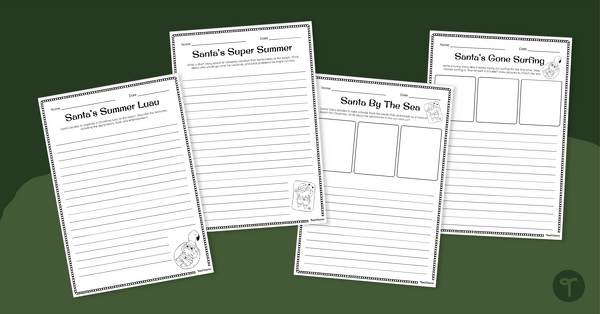
Summer Santa on Vacation - Christmas Writing Prompts
Inspire hilarious Christmas narratives with a printable set of Santa on Vacation writing prompt worksheets.
- Plus Plan
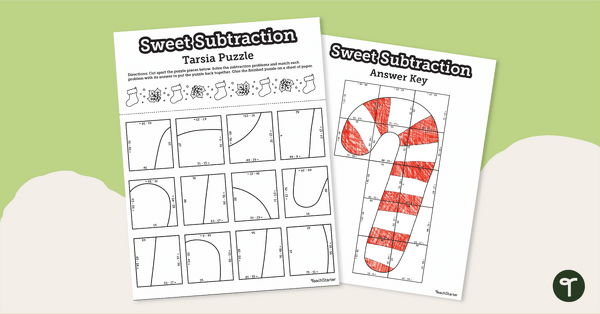
Candy Cane Activity - 2 Digit Subtraction Tarsia
Practise two digit subtraction with regrouping with a Tarsia Puzzle candy cane activity.
- Plus Plan
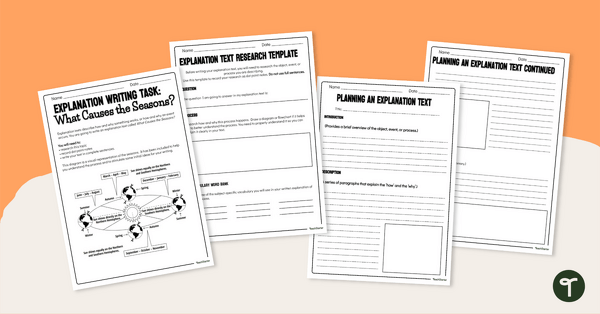
What Causes the Seasons? Explanation Text Writing Task
Use this scaffolded writing task to have students write about how seasons change.
- Free Plan
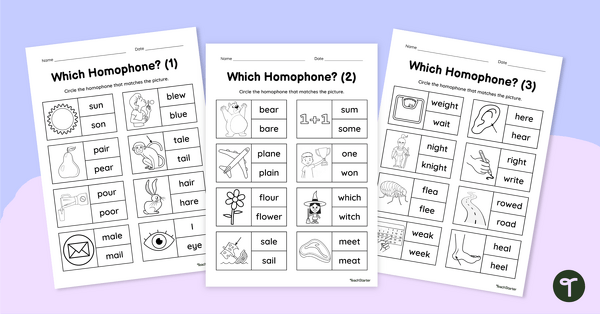
Which Homophone? Worksheets
Download this differentiated homophones worksheet to help your students become more familiar with this tricky vocabulary!
- Plus Plan
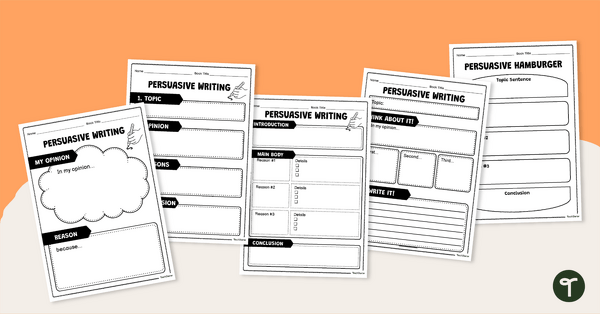
Persuasive Writing Graphic Organiser Pack
Help students gather their thoughts during persuasive writing with this differentiated set of graphic organisers.
- Free Plan
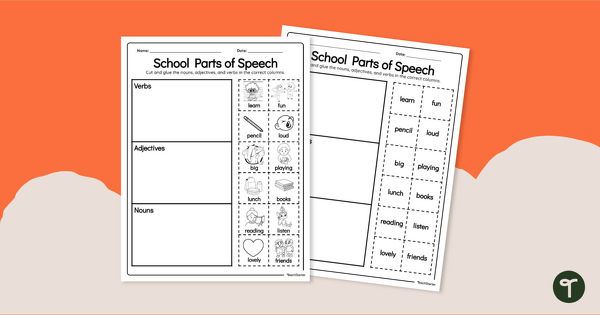
Nouns, Verbs and Adjectives Cut and Paste Worksheet
Have some fun identifying parts of speech by sorting school-themed nouns, verbs, and adjectives with a cut-and-paste worksheet.
- Free Plan

Printable Number Line 0-30
Make counting a visual experience with this set of 4 multi-purpose 0–30 number lines.
- Free Plan
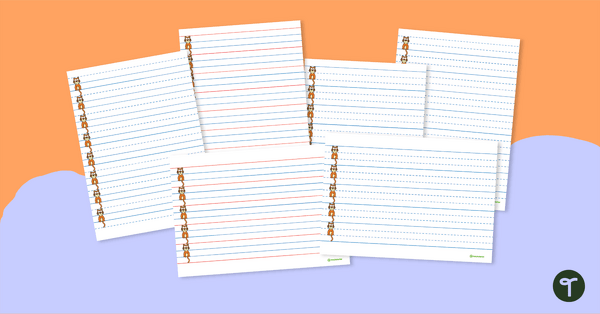
Handwriting Lines with Cat - Dotted Line
Use the cat to help your students set their handwriting out correctly.
- Plus Plan
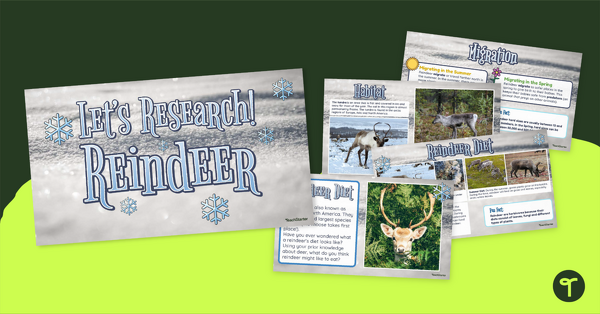
Let's Research! Reindeer Facts for Kids PowerPoint
Use this instructional Google Slide or PowerPoint to guide your students through a reindeer research project!
- Plus Plan
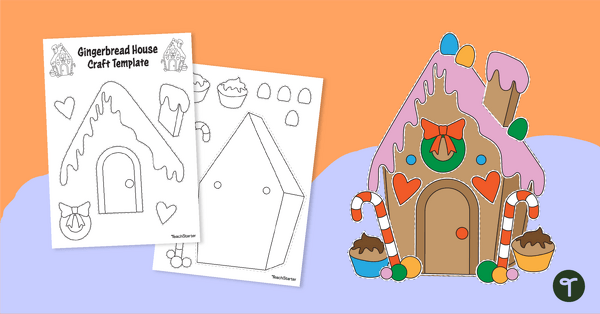
Christmas Gingerbread House Template
Introduce your students to one of Germany’s most popular Christmas traditions with a printable gingerbread house craft template.
- Plus Plan
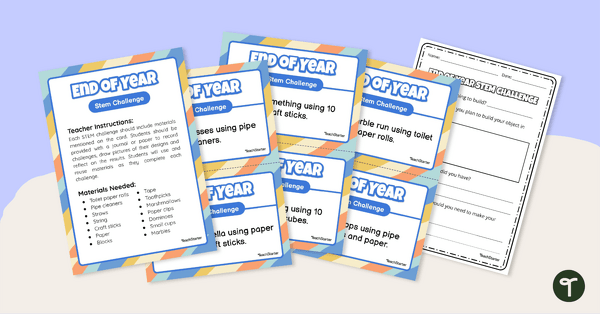
End of Year STEM Challenge
Use critical thinking and problem-solving skills with this set of STEM challenge cards.
- Plus Plan
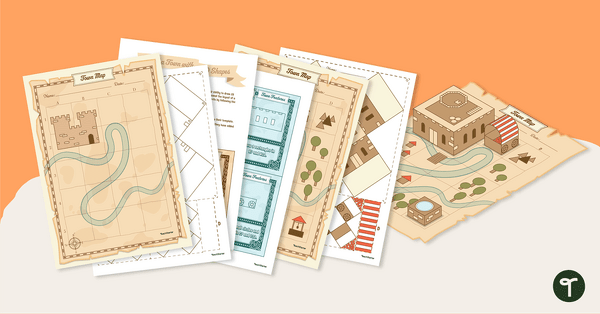
Draw a Town with 2D Shapes
An interactive and evolving resource where students draw 2D shapes incrementally to create a town map and 3D models.